BY JAMES ULMER
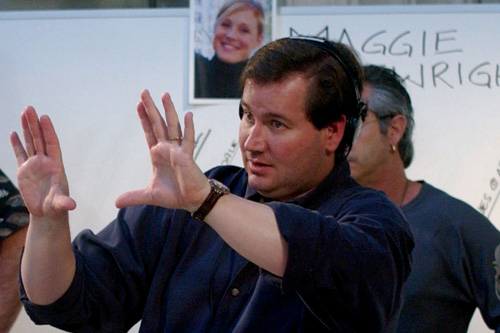 David Nutter has launched at least 10 pilots including Without a
David Nutter has launched at least 10 pilots including Without a
Trace and the upcoming Traveler. (Credit: Eric Liebowitz/ABC)
It's a battlefield out there for television's pilot directors. In today's marketplace, budgets are tight, competition is huge and chances are small your pilot will ever get picked up by a network. But the happy few that survive the odds by sheer innovation and skill are changing the way television is made–and seen.
The odds are daunting. Out of every 100 pilots produced, only about a half-dozen are picked up to go to series, and there's one less network to do the picking (WB and UPN have recently consolidated to form CW). The pressure is rising, too. Networks are demanding their pilots outshine the competition in a 500-channel universe and satisfy the small screen's increasingly sophisticated viewers. Thanks in part to a recent spurt of groundbreaking series like The Sopranos, CSI, Six Feet Under, Alias, 24 and Sex and the City, they want pilot directors to produce more shows with complex storylines and feature-quality production values. Call it being cursed by your own success.
"Nowadays, the network executives aren't just asking you to 'make your day'–to shoot the necessary seven pages in twelve hours," says Thomas Schlamme, an Emmy-winner for his Sportsnight pilot and the executive producer and director for The West Wing pilot and series. "They're saying we need you to embrace a visual stamp. We need you to help hook the viewer into a kind of storytelling we haven't seen before."
This increased demand for high-concept, visually stylish storytelling is a major reason for a welcome trend in television: more than ever, pilot directors are signing on as executive producers of their series, overseeing all aspects of writing, casting, production and post. But the demand also comes with a Catch-22: How can pilot directors reconcile the networks' demands for greater production values with their need for tighter budgets?
And how can directors do this and still meet their core responsibility: to shoot the pilot in an adventurous but practical style so that future episodic directors can replicate its template on a weekly basis?
"With a pilot, you're not only giving birth but raising the child," says David Nutter, one of the most successful directors and executive producers of one-hour dramatic pilots, whose most recent foray is the upcoming ABC drama Traveler. "Because of all these pressures, you have to come in really well prepared and know the shortcuts to take. You have to build partnerships with your writers and producers who will be working on its future episodes. And you need to know where to put the money you have, and to give the networks reality checks on what can and can't be done."
In the pilot for the Superman-themed Smallville, Nutter put a big chunk of show's money in its teaser–that all-important first four or five minutes that hooks viewers into the story. The sequence involved a meteor shower which heralds Clark Kent's arrival from a distant planet.
"I knew that if I could get the teaser just the way I wanted it–if we could do that sequence as good as we possibly could–then the audience would be so hooked they'd be happy to watch color bars for the rest of the pilot," says Nutter.
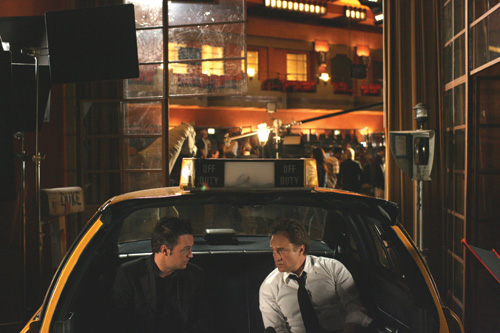
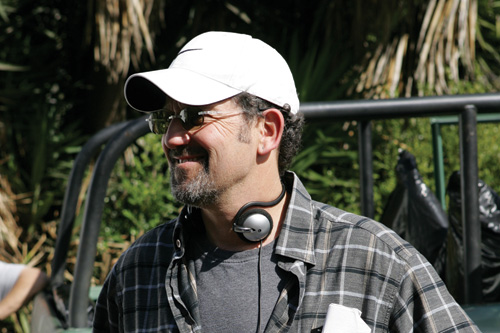 INNOVATOR: Thomas Schlamme's latest series, Studio 60 on the
INNOVATOR: Thomas Schlamme's latest series, Studio 60 on the
Sunset Strip, about a sketch comedy TV show, is set in an
old theatre. (Credits: Scott Garfield/NBC)
Or as Marc Buckland, the director and executive producer of the comedy My Name Is Earl, puts it: "You try to throw in everything you can into your pilot, including the kitchen sink, in order to sell it. And you do it under a real financial squeeze."
It might seem a stretch to call a price tag of $6-8 million for an hour pilot a "squeeze" (it's about $3 million for a half-hour sitcom), but the budgets of time and money are never big enough in pilot land. Hour pilots rate about twelve to fifteen shooting days, and about eight shooting days for each episode. For half-hour shows, the standard hovers around eight days for the pilot and three to five days per episode. As Nutter puts it, "There's simply no time to make mistakes. You have to keep your running shoes on."
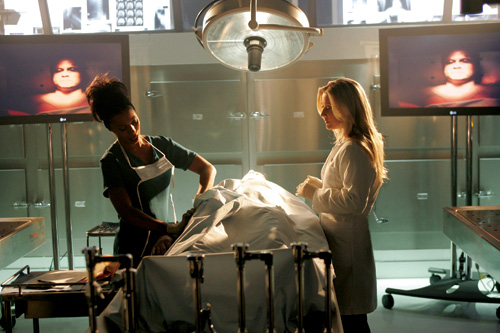
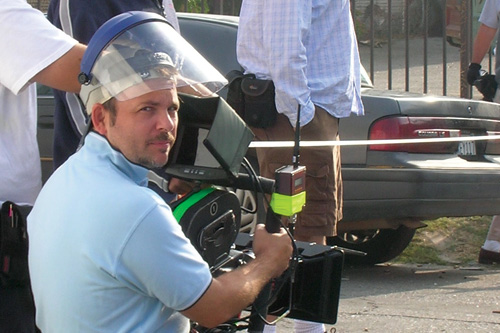 FROM FILM TO TV: Danny Cannon brought big screen technique to
FROM FILM TO TV: Danny Cannon brought big screen technique to
work in creating the CSI pilots. It was like making a short movie.
(Credits: Michelle Pinkney, Robert Voets/CBS)
For Tim Story, a feature director who recently filmed the pilot Primary, the need for speed in pilot directing created his biggest learning curve. "What I normally did with the coverage of three shots, I had to fit into one and still get the imagery you'd have in a feature," he notes. "You have to get as much information into the frame as quickly as possible."
For the pilot, Story and his crew built a visually elaborate set of a computer lab, but time constraints kept eating up opportunities to shoot the scene. Finally, on the last day, they whittled the set down to just a few computer screens and mirrors on a black tarp. "And suddenly," Story marvels, "this [minimalist] set gave us the feeling of a black hole of endless computer screens, of a computer universe that was cooler than anything we could have imagined."
Skilled pilot directors are able to tailor the job's built-in limitations to fit both a tight budget and a large artistic vision, which in turn can be also be passed down to episodic directors. When directing the Emmy-winning half-hour pilot for Sportsnight, written by Aaron Sorkin, Schlamme wasn't satisfied using the traditional three-camera, proscenium style strategy. But he also knew a single camera shoot uses up more production time, and he had only a few days.
"Our solution was to create one large interconnected set that went from the offices to the boardroom so we could get these longer Steadicam shots, with walls flown in and out as the camera moves," Schlamme explains. "Then when the actors stopped, say, at a doorway, we'd have two cameras waiting to get our 'overs,' and we could light it like a film."
In short, Schlamme had created a new kind of sitcom hybrid, enabling him to shoot several pages in one take–a technique that accommodated Sorkin's narrative style–and still get a feature-quality look. He later replicated this method for the "walk and talk" sequences of The West Wing.
"As a pilot director and executive producer, I try to integrate the writing and production values as one entity, because I want to protect Aaron's vision," he notes. "We see our relationship as a playwright-in-residence working with an artistic director."
Nowhere is this integration better exemplified than on the duo's new pilot for Studio 60 on the Sunset Strip, which goes behind the scenes of a fictional sketch-comedy TV show.
"Aaron doesn't have in his head how exactly the pilot and each episode will progress, but he knows the emotional terrain he wants to investigate," says the director. "And this leads us to discover which characters we'll develop, which actors we'll cast, what sets we should build and how to mix them together so they'll work for the series too."
For Studio 60, Schlamme's biggest creative and economic challenge was how best to portray the script's emotional core: the relationship of the theatrical world within the TV studio to the more menacing world of the television network.
"The simplest answer for me would have been to use a sound stage on the Warner Bros. lot for the television studio and one of the tall buildings nearby to represent the network," the director reports. "The problem with this approach for me was that it didn't feel very glamorous, and didn't really relate to how Aaron writes. Aaron is a very romantic writer, and I felt there was something very romantic and theatrical about people forty years ago putting themselves on a stage, locking the door and having to come up with a new live sketch-comedy show every week."
Schlamme's solution was to import, literally, the world of the theater into the heart of a TV studio. "My idea became: what if this show really is housed inside an actual old theater building? What if we design it so that the first floor is where the theater's old proscenium stage used to be, and we've ripped out all the seats and put up bleachers and TV lights to do a live show from this venue? And next to this old theater we'd have this big, monolithic corporate building where the network was housed. This way you could immediately see two very different worlds that were in conflict with each other–the theater threatened by the institution of television."
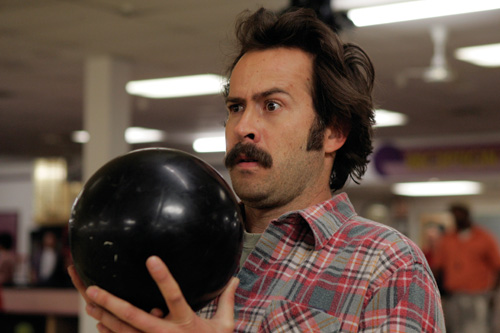
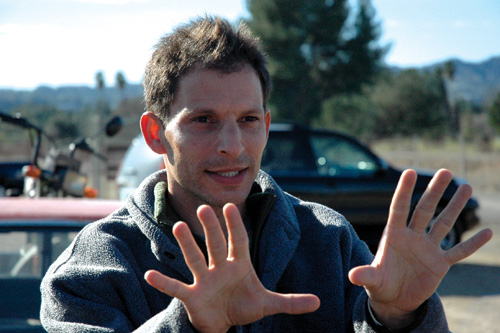 PILOT SALE: Marc Buckland, who launched My Name is Earl, says
PILOT SALE: Marc Buckland, who launched My Name is Earl, says
"You throw everything you can into your pilot, including the
kitchen sink, in order to sell it." (Credits: Hopper Stone/NBC)
As the directors and executive producers of their pilots, Schlamme, Nutter and CSI's Danny Cannon have helped nurse the current trend of visually ambitious single-camera productions. These shows are conceived, shot and edited like mini-features and boast highly marketable directorial signatures.
In his breakthrough pilots for CSI, CSI: New York and CSI: Miami, Cannon worked largely with film-based talent, hiring a feature cinematographer and production designer and aesthetically referencing the films of Michael Mann. The entire franchise has been overseen by Hollywood's king of the blockbuster, Jerry Bruckheimer.
"At the time [in 2000] there were very few feature film directors doing pilots," Cannon notes. "It was the first time my writer and I had worked in television, and I wasn't really aware of the act breaks or the TV craft side. As far as I was concerned, I was making a short movie for Jerry."
Like Schlamme, Cannon has used the pilot form to experiment with new narrative and visual styles which enhanced his writers' scripts. In the case of CSI, that centered on the intricacies of forensic investigations and their role in solving crimes. "My mission with the pilot was to get in there with the evidence, to examine the microscopic things that drove the story. Unlike other crime dramas, the integrity of this show is about the evidence and the facts, not about arguing and witnesses."
With only three weeks to prep his pilot and find the look of his show, Cannon honed in on a strategy: cut out much of the script's explanatory dialogue," and replace it with visualizations that are the essence of film. Once we did that, things got very creative."
The director and crew used a variety of microscopic and telescopic cameras that allowed audiences to travel places they'd never seen before. Many of these unusual close-ups–zooming into a body's wound, for example–were inspired by similar shots in movies like Three Kings, which, as Cannon notes, were "in the zeitgeist" at the time.
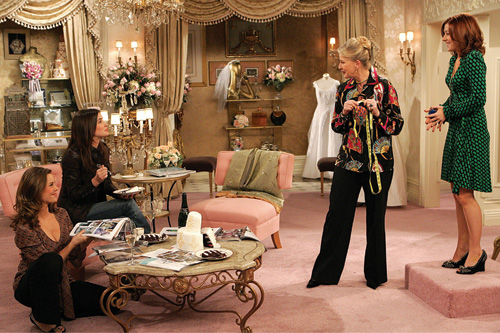
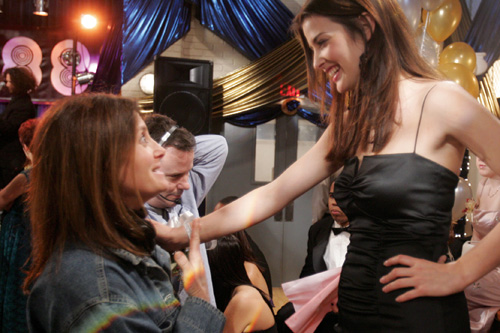 ACTOR'S DIRECTOR: Pamela Fryman on the set of How I Met Your
ACTOR'S DIRECTOR: Pamela Fryman on the set of How I Met Your
Mother. "When you're shooting your pilot, you're discovering
who your characters are." (Credits: Monty Brinton/CBS)
"You can take forever to describe with dialogue the way a bullet is lodged in a spine, but if you put a telescopic lens in the body and come face-to-face with the bullet, you do it in under a second," Cannon observes. By foreshortening his shots, Cannon discovered he was able to foreshorten time as well. It became one of the defining trademarks of the CSI franchise.
Other advances Cannon brought to his pilot included using color correction technology in post-production to create, in partnership with his cinematographer, the show's saturated and unconventional color pallet. He also devised in post some unusual storytelling devices, notably the show's unique flashbacks.
"It's a device that's so overused and old-fashioned, so I didn't want them to be ordinary cut-to's," Cannon explains. "I wanted them to feel like car accidents, in that they're emotional memories of violent things you only partially recall." Cannon's own memory hearkened back to a white flash he had seen years before in a film called Brainstorm. "I remembered that technique and developed a way of using it in post. We scratched the film and then turned the camera on and off so that there were edits in between, as if there were pieces missing in the memory–pieces of the truth. It felt like a slap in the face."
It certainly did to the network executives, who feared for their primetime viewers. "There was a lot of discussion about whether we were too fast, too loud, too violent, too frightening and had too many cuts," recalls Cannon. "We'd done a lot of dead-body homework and had used some actual and disturbing photos in the original pilot, but that was too grisly for them. So to get picked up, a lot was kicked out."
Today, when Cannon looks back at the original CSI pilot, "it looks pretty tame. I don't think we pushed it enough, and I still don't think I've gotten there yet."
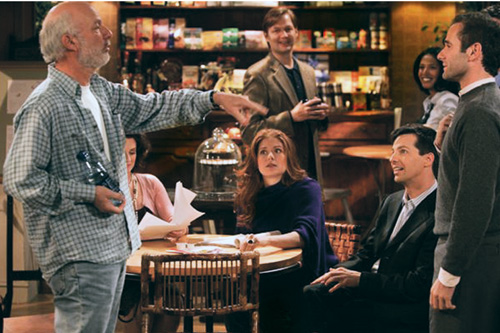
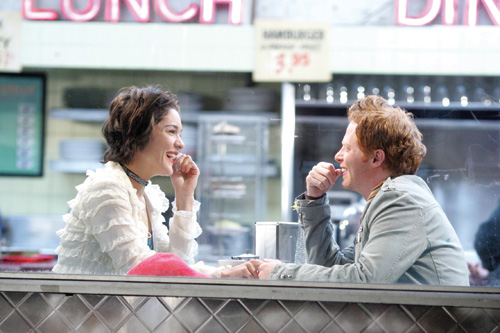 THE MASTER: Jim Burrows has directed the pilot for Will and
THE MASTER: Jim Burrows has directed the pilot for Will and
Grace, Friends and numerous others. His latest is The Class.
(Credits: Monty Brinton/CBS)
While the success of Cannon's pilots is anchored in their visual and narrative ingenuity, other directors, particularly sitcom directors, find their shows' appeal is driven more by their casts. For them, the principal challenge of a pilot is finding the characters and the right actors–and that special chemistry that is critical to every sitcom's success.
"No, I'm not a high concept guy and never was," offers James Burrow, the legendary sitcom director who parented the pilots of Friends, Cheers, Will & Grace and 11 other series that have scampered into syndication. "The intricacies of single-camera producing don't interest me because in my shows, the camera isn't a character like it is in the movies. I'm not about pyrotechnics. My job in the pilot is to make sure that when people see these kids in the cast, they feel comfortable with them and want to tune into them next week."
For Burrows, who recently helmed the pilot for CBS' new sitcom The Class, the key to pilot directing is choosing the actors and writers. "Even before I talk about casting, I meet the writers and audition them. I want to make sure a writer can defend his material and not be defensive about it. The minute he gets defensive I don't want to work with him, because with any writer I work with, 50 percent of what I say is great, 50 percent is bullshit and it's your job to figure out which is which."
Unlike many pilot directors, Burrow's unmatched track record insulates him from most network nay-saying. "By dint of my record I probably have more power than most sitcom directors. I tell my writers, I'm here to protect your vision because I can dilute the homogenizing process of the network. Television, after all, is in the business of imitation, not innovation."
So when the network continually complained that there were too many gay jokes in the pilot of Will & Grace, Burrows shot back: "That's our bailiwick! If we don't do these jokes, who will? These are the ones only we can do and that we have to do," and which, ultimately, the network did.
For both the actors and director, shooting a pilot is "an incredibly exciting experience because of the intense creative process," says Buckland. Adds Pamela Fryman, a protégé of Burrows who directed the pilot of How I Met Your Mother: "When you're shooting your pilot, you're discovering who your characters are. So the pilot is script-driven more than cast-driven. But by Episode 20, the show becomes more cast-driven because you understand who the characters are and you can play more with them. It's more about the nuances of the scene."
On the pilot for My Name Is Earl, nuances were very much the focus of one belabored negotiation between the creative team and the network that involved the extremely critical casting of... a mustache.
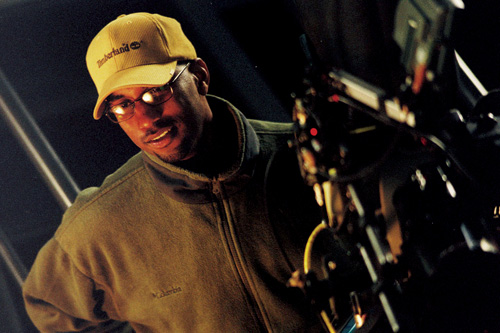
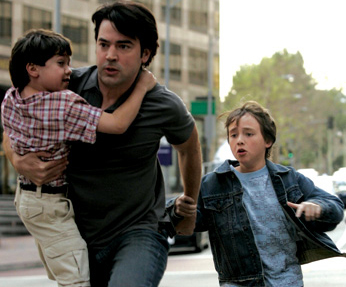 THE FIRST TIME: Feature director Tim Story, who made his first
THE FIRST TIME: Feature director Tim Story, who made his first
pilot for Stand Off, says "the need for speed" was his biggest
learning curve. (Credits: Kelsey Mcneal/FOX)
"The network wanted to make Jason Lee (who plays Earl) still look handsome because he was going to be a TV star," explains Buckland. "But on the creative side, we had to make sure the look still fit the character of Earl." So up until 12:30 the night before the pilot's first day of shooting–which had a 5:30 call that morning–the production was emailing multiple mustache photos to NBC Entertainment president Kevin Reilly before everyone could finally sign off on the star's look. "It became quite a circus," muses the director. "We called it Mustache-gate."
For Fryman, the frayed nerves came when she had to stage two run-throughs of How I Met Your Mother's 60-scene pilot for the network and studio brass. Because so much of the show's comedy happens on the edit, the director had to create an "insanely speedy way" to move from one scene to another.
"We'd do a scene on the living room set, but the joke really played when we cut to the restaurant set on the 'B-side' of the stage," she explained. "So how do you get to that next line fast enough so you don't kill the laughs?" Instead of moving her actors over to that B-side, as she'd normally do in a run-through, Fryman simply set up a table and a chair next to the living room couch, with her actors hopping over the sofa at the end of the scene to land in the "restaurant." "It got the laughs we needed," she reports–and the show got picked up.
But Fryman finds less humor in the frustrating way that network run-throughs for pilots have changed over the years. When she first started directing sitcoms a decade ago, camera blocking was done, as it is now, using studio monitors to set the shots. For the actual performance of the run-throughs, however, these monitors were removed so that the audience could watch the actors directly.
Nowadays, the monitors are back and loom over the stage and pull the audience's focus away from the live performers. "So now, when the executives give their comments, we get a lot of TV notes about adjusting the shots rather than about adjusting the performances," Fryman laments. "There isn't as much attention to the acting itself."
Indeed, part of the learning curve for a pilot director is to figure out who is giving those notes and suggestions. "Sure, everyone has an opinion, but not everyone matters," says Nutter. "Are they given by someone who really has the final say? A lot of the frustration of less-experienced pilot directors comes from being pushed around in this way, and from not sticking by their own guns when the notes are given."
This begs a larger concern voiced by some in the profession: Are pilot directors, in fact, neglecting their "guns" by not demanding more recognition for their work from the industry at-large?
Yes, there's a plethora of top talent and product in today's pilot marketplace–a "golden age," as Story calls it, of innovative shows "that put most features to shame." And yes, the success of these shows "has given more power to the pilot directors," says Cannon, so that they're "equal partners" with writers and producers in creating these series.
Yet many still feel their profession is undervalued by their peers. "Not to take anything away from the writers, but I feel pilot directors contribute more than we're given credit for," remarks Buckland. "After all, neither writers nor directors can have success in this business without working hand in hand."
Burrows is even blunter: "We are totally underappreciated for what we do, especially sitcom directors. That's because ours is a writer-driven business, and those writers who aren't self-assured are going to hire directors who aren't self-assured because they're scared. And that can lead to directors who might even become puppets of the writers, essentially traffic cops worried about getting their next job. They don't take chances, and that's the problem. They should be going out there with their guns blazing."
While there may be room to fortify and improve their reputation in a very tough town, pilot directors are proving, by the sheer bravado of their work, that attention must be paid. In this new "golden age," they're dissolving the traditional boundaries between film and television as never before.
And despite the higher stakes and greater demands put on them–or perhaps because of them–they're taking their stand as vital players in launching any successful show. And that's a storyline worthy of any primetime series.